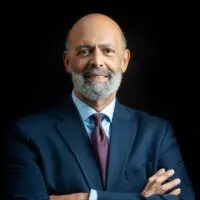In this CCS Fundraising webinar, we preview findings from the upcoming Philanthropy Outlook 2024-2025 report, researched and written by the IU Lilly Family School of Philanthropy. Together with our esteemed industry panelists in finance, nonprofit fundraising, and philanthropy, we explore the realities of today’s philanthropic and economic outlook and how Americans continue giving generously.
PRESENTED BY
Why Philanthropy Remains Resilient
Even with recent economic fluctuations and global crises, philanthropy can anticipate some bright spots in the years ahead, according to the Philanthropy and Economic Outlook webinar and accompanying Philanthropy Outlook 2024 & 2025 report.
Total philanthropic giving in the United States is poised to increase by 4.2% in 2024, followed by a 3.9% rise in 2025. The anticipated growth rates for these two years suggest a notable improvement, with the rate for 2024 (4.2%) substantially exceeding the average annual growth rate of 1.9% documented in the decade ending in 2024. As we delve into the implications of this anticipated growth, we uncover a narrative of resilience, innovation, and unwavering dedication to making an impact through charitable giving.
Strength and growth of philanthropy
The resilience and growth of philanthropy have been noteworthy, particularly during economic downturns and the COVID-19 pandemic. Notably, philanthropy in the US demonstrated remarkable resilience during the pandemic crisis year of 2020, with donations reaching a record-setting $471.44 billion.
This level of generosity showcases a deep commitment to philanthropy, emphasizing the importance of nonprofits continuing their fundraising efforts despite challenges. CCS Chairman Rick Happy noted, “We have lived through some difficult moments, and during those times, our nonprofit partners continue to adapt to meet the moment,” underscoring the critical nature of persistence and strategic adaptation in the face of adversity.
impact of wealth creation on philanthropy
Nonprofits across the country benefit from generosity among high-net-worth individuals (HNWIs). Chris Hyzy, Chief Investment Officer at Bank of America, pointed out, “Since January 1, 2020, we’ve observed about $39 trillion in wealth creation between real estate and financial assets,” highlighting the potential for nonprofits to engage with individuals who are becoming more affluent and looking to make an impact on a meaningful mission.
Philanthropy among HNWIs has spiked in the past few years. In 2022, HNWIs continued to significantly impact philanthropy through their contributions. The top 10 charitable gifts announced by these individuals or their foundations amounted to nearly $9.3 billion. This figure was highlighted by a substantial $5 billion donation from Bill Gates, positioning him as the top donor for that year. In 2023, the top 50 US donors—led by Michael Bloomberg, Phil and Penny Knight, and Michael Dell—made a generous $11.9 billion donation.
shift toward cause-driven giving
There has been a shift toward cause-driven giving, with donors increasingly motivated by personal values over institutional loyalty. This trend necessitates clear communication by nonprofits about their impact and alignment with donors’ values. CCS Managing Director Sarah Krasin explained, “More people give to nonprofits than go to the ballot box […] charitable giving is an incredibly important way that people represent their personal values,” emphasizing the need for alignment with donor interests.
Now more than ever, it is more important to have a clear case for support and to engage personally with stakeholders.
We encourage focusing on your strategic priorities and doing the work, really getting in front of people.
Sarah Krasin, Managing Director, CCS Fundraising
digital innovation in fundraising
Innovation, particularly through technology, is becoming crucial in fundraising. National trends underscore the growing sentiment that nonprofits must adopt new technologies and platforms to engage donors effectively. “Think generative AI,” Chris Hyzy suggested, pointing to the potential of technology to enhance fundraising strategies and operational efficiency.
increasing donor sophistication
Donors are seeking more sophisticated ways to contribute, focusing on tangible outcomes and the effectiveness of their donations. “They operate a bit more like private equity companies, asking, ‘What will the return be?’” observed Dr. Michael Lomax, CEO of the United Negro College Fund, indicating a trend toward social impact investing and the need for nonprofits to demonstrate the effectiveness of their programs. Donors increasingly turn to research institutes to define high-impact philanthropy and offer strategies to maximize their philanthropic investments.
engagement across generations
Engaging with millennials and Gen Z is essential for the sustained growth of philanthropy.
You’ve got about 130 million millennials. They will be the donors of the future.
Chris Hyzy, Chief Investment Officer, Bank of America
As you engage young professionals in your organization, you could consider leveraging social media, honest and authentic communications, career and age-relevant volunteer opportunities, and ambassadorship programs.
building trust and credibility
Building trust and credibility with donors is paramount in the current philanthropic landscape. “It’s not a question of if the assets are available to be given away. It’s a matter of if we’ve taken the time to build the trust,” Sarah Krasin emphasized, highlighting the importance of effectively communicating an organization’s vision, impact, and operational effectiveness to attract and retain support.
philanthropy remains resilient
In the ever-evolving philanthropic landscape, donors continue giving generously even in adversity. As we look to the future, characterized by a shift toward cause-driven giving, increasing donor sophistication, and intergenerational engagement, one truth remains—the importance of trust and credibility. Through transparency, impact-driven strategies, and genuine connection with stakeholders, philanthropy’s transformative potential will continue in 2024, 2025, and beyond.
Frequently Asked Questions (FAQs)
On the Report Methodology
Do growth projections in The Philanthropy Outlook 2024 and 2025 account for inflation?
Yes, growth projection values in the report are all in real or inflation-adjusted terms.
Does the Foundation growth projected in the report include Donor Advised Funds (DAFs) and private family foundations?
Giving from private family foundations is included under giving from foundations in The Philanthropy Outlook 2024 and 2025. DAF giving, however, is included under individual giving.
Does the report consider the upcoming US presidential election?
The report does not include the 2024 US presidential election as a factor in its projections, as presidential elections have historically not significantly affected charitable giving in aggregate. Learn more about trends in giving around presidential elections in CCS’s article “Charitable Giving During Presidential Elections.”
Does the report consider increasingly concentrated wealth in the US?
The Philanthropy Outlook 2024 and 2025 accounts for all giving, including outlier giving from high net-worth individuals, and focuses on aggregates, not averages. While we know that concentrated wealth greatly affects giving, exactly how is unclear.
Is an increase in donors the biggest factor in the projected growth in household giving, or are large gifts the biggest factor?
The Philanthropy Outlook 2024 and 2025 does not consider the number of donors and individual gift amounts and only projects aggregate growth rates. However, the number of donors to nonprofits has trended down over time, so it is unlikely to be a growth driver in 2024 and 2025 giving.
Does the report’s projected Household growth account for generational wealth transfers?
The model used to forecast estate growth in The Philanthropy Outlook 2024 and 2025 does not have a variable that directly measures the impact of generational wealth transfers. However, historical trends in the report will likely capture the impact of a Great Wealth Transfer when it occurs. If they cannot capture impact in the short term, the model (which the IU Lilly Family School of Philanthropy optimizes each year based on predictive value) may contain a death rate or similar variable in future report editions.
Does the report include household/individual projections by sector?
It does not. The aggregate amount of donations received by each nonprofit sector tends to be more variable year-over-year, affected by complex factors, and is more challenging to project accurately.
Does the report differentiate individual giving by donors who itemize and donors who don’t, or high-net-worth individuals?
The Philanthropy Outlook 2024 and 2025 does not differentiate between itemized and non-itemized individual giving. However, it bases its individual giving data on the 2023 Giving USA report, which does differentiate itemized and non-itemized individual giving. Additionally, The Philanthropy Outlook 2024 and 2025 report model does include the number of itemizers as a variable but does not project the amount of giving that will come from households of specific demographics or wealth levels.
Does the report’s projected corporate growth consider the negative impact of climate change?
The report only considers climate change’s negative impact implicitly through historical data and recent trends.
Additional Trends and Insights
What are the current giving trends in the US?
CCS’s 2023 Philanthropic Landscape report compiles and analyzes the most recent data on giving from across industry sources. We recommend viewing it along with the CCS 2024 Philanthropy Pulse report for the latest data on nonprofit fundraising trends.
Is giving in the US down overall for 2022 and 2023?
Giving total adjustments are usually made based on inflation activity and the availability of additional giving data. While giving in 2022 has initially been reported to total $499.33 billion — a decline of $17.32 billion from 2021’s record-setting giving — comparing 2022’s initially-reported giving total to 2021’s pre-adjusted, initially-reported giving total of $484 billion suggests that charitable giving actually increased by 3%. Giving USA will share 2023’s total giving in the summer of 2024.
Why does the report project giving in 2025 to double giving in 2024?
The Indiana University Lilly Family School of Philanthropy finds that many economic indicators for estate giving lag a year behind. With consumer sentiment and net worth projected to grow even more in 2024 than in 2023, estate growth rates in 2025 will grow even more than in 2024.
Were any projections made for philanthropy in 2022 or 2023? If so, how accurate were the projections?
As The Philanthropy Outlook 2024 and 2025 report is the first of its kind, CCS Fundraising and the Indiana University Lilly Family School of Philanthropy did not make any projections for previous years. However, the methodology in the Philanthropy Outlook 2024 and 2025 has been rigorously tested. Additionally, CCS will release a 2nd edition of the report in 2027.
Given the growth rate of foundations, what will be the top three areas of giving from foundations in 2024 and 2025?
While top areas of giving from foundations are not a component of The Philanthropy Outlook 2024 and 2025 report, the Indiana University Lilly Family School of Philanthropy does not anticipate foundation grant-making to diverge too significantly in the short term compared to the recent past. Eventually, giving from foundations may shift more significantly, but probably not in the next two years.
Will nonprofits benefit from the Great Wealth Transfer if it occurs as the philanthropic sector anticipates?
It is unclear where money from the Boomers will go as they transfer it to the younger generations. Often, donors give large bequests to foundations or other grantmaking institutions, so nonprofits may not immediately benefit from the Great Wealth Transfer but will likely experience a future boon.
How do foundations determine their level of giving?
While each foundation is different, grantmaking from foundations generally follows the market (with a slight lag), as investments often form their asset base. Most foundations grant approximately the required 5% of assets annually, though the amount can be calculated over a three-year rolling investment performance period.
Will consumer prices be impacted by lowering inflation?
At the time of the Philanthropy and Economic Outlook webinar, consumer prices seem to be increasing roughly in pace with other inflation measurements. The consumer price index increased about 3.2% year over year in February 2024, which, while higher than the targeted rate of 2%, was within historical norms. If different inflation indices continue to show large divergences, we may need to revisit trends in consumer prices.
More Insights
CCS Philanthropy Pulse
Uncover the latest fundraising trends in the 2025 CCS Philanthropy Pulse report! Packed with data-rich insights from 600+ nonprofit organizations across diverse nonprofit sectors, this free report will help you plan for success in 2025.
The Philanthropy Outlook 2024 and 2025
Strengthen your fundraising strategy this year and next with this data-driven publication, revealing predictive insights for the philanthropic sector in the years ahead.
Charitable Giving During Presidential Elections
As we approach the 2024 US presidential election, many nonprofit professionals wonder if and how politics will affect this year’s charitable giving landscape. Read on as we examine research that helps us understand the relationship between nonprofit fundraising and political giving.





